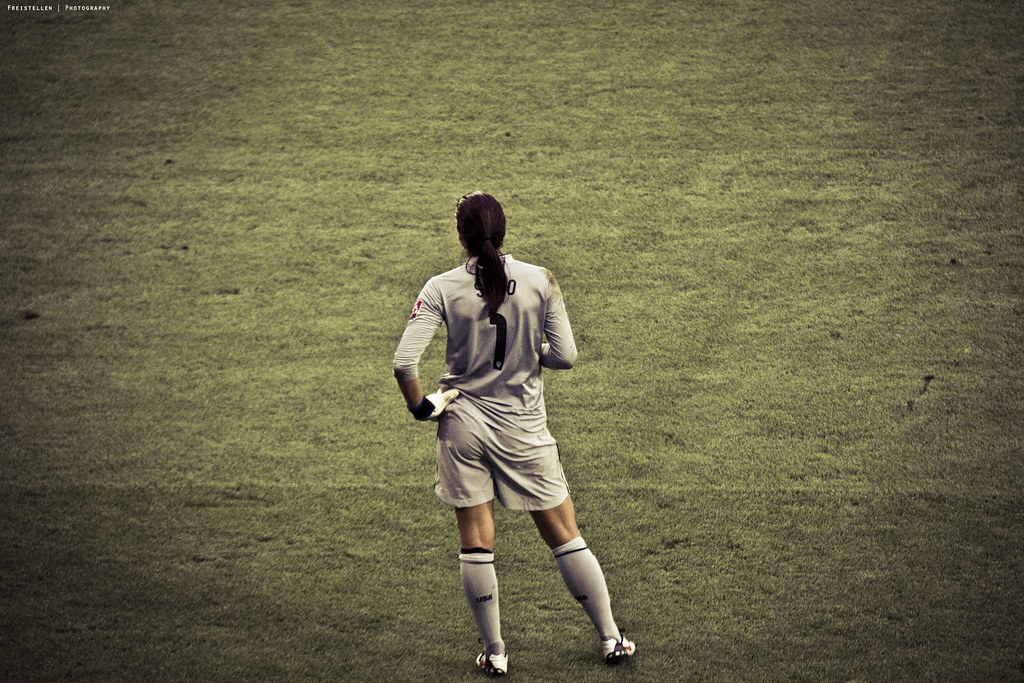
21 Apr How Soccer Goalkeepers Can Become Beasts: Written by a Striker
I wanted to avoid titling this post “Goalkeeper Specific Training.”
While I believe goalkeepers should have some degree of individualized programming, it becomes more about turning them into beasts.
And by this I mean Hope Solo beasts. Briana Scurry beasts. Buffon beasts. Ochoa beasts. Casillas beasts. Van der Sar beasts.
What these folks have in common are these beastly traits:
– Superhuman strength
– Explosive power (horizontal, vertical, lateral, rotational)
– Foot Quickness and Speed
– Confidence

I don’t care if you’re averse to the weight room or don’t see its purpose. I got news for you: the traits above cannot be optimized unless a goalkeeper is lifting weights.
In fact, it’s a HUGE mistake if goalkeepers aren’t strength training. Oddly enough, I see this a lot. Youth goalkeepers, especially high school juniors and seniors who have not lifted a dumbbell. And these kids aspire to play D1 and professional soccer. It’s sad, to say the least.
On the flip side, I’ve also seen many youth goalkeepers who make their strength a priority and who (not surprisingly) improve their jumping power and agility, and body language (confidence).
So.
To all the goalkeepers who haven’t hit the gym: by now, you’ve gotten away with skills training, so it’s time to up the ante and build yourself into a more robust athlete.
I don’t care if you think you’re hot stuff. Perhaps you are. But have you thought about leveling up your jumping and diving power, uplifting your demeanor, or withstanding injury when you grow old?
Put simply, there’s always room for improvement.
So get in the gym. And start flexing those biceps to the other team.
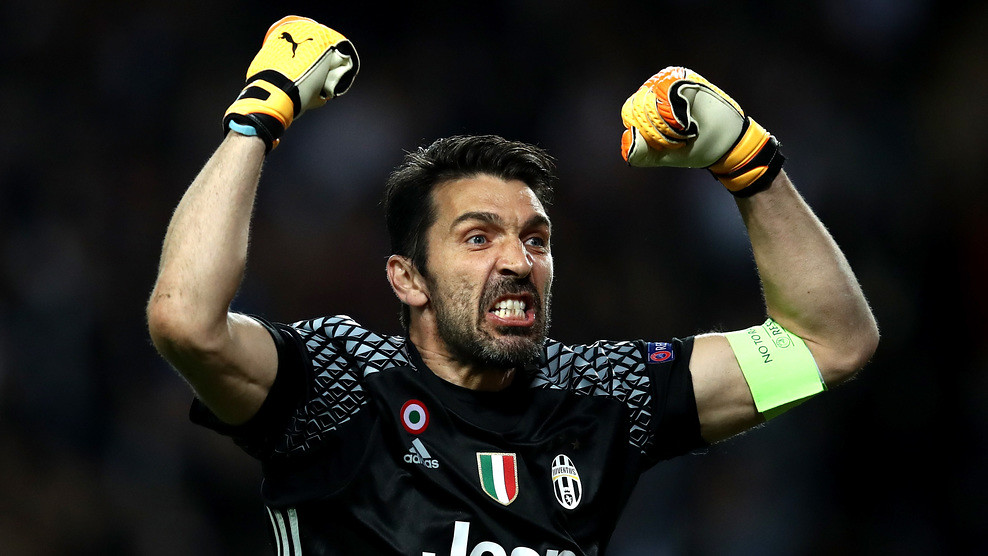
Looking to your one job as a keeper, isn’t it to protect your goal fearlessly? So why wouldn’t you become the strongest and scariest person on the field?
Yeah. Thought so.
Goalkeepers, to that end, arguably sacrifice their bodies the most on the pitch. Collisions. Dives. Tackles. Jumps. Are you strong enough to face these shenanigans?
But before I dive into the meat of this article (pun intended), hang on a second…
Here’s a public service announcement: simple exercises are ahead. What I will not do is put a resistance band around the goal post, tie the keeper to it, and shoot weighted medicine balls at them.
I know, I know. I apologize for not being hungry for Instagram followers. If you have followed me for a length of time, I like to keep things simple.
As long as goalkeepers hone in on strength, power, and overall athleticism, then progress with creative, more challenging movements, they will grow into beasts. Goalkeeper specific training does exist, but it does not need to be as bombastic as you think.
So how can goalkeepers become beasts? Let’s do this:
1. Build superhuman strength
Right off the bat, I can list several reasons goalkeepers need to build strength with weights:
– Improve fat free mass to move quicker
– Improve jumping power
– Improve lateral power
– Improve grip strength
– Improve short distance speed
Here are a few drills to try:
Dead Stop Single Leg Deadlift
What it does: builds hamstrings and glutes for better balancing, jumping and accelerating, landing and absorbing of force for injury reduction.
Incline Dumbbell Bench
What it does: builds upper body strength. I’d be lying if I didn’t touch on aesthetics: if a keeper looks good, they feel good.
Lateral Lunge + Pulse
What it does: improves ability to move side-to-side, and produce power laterally.
Sticking Point Pull-Up
What it does: improves posture, back strength, and confidence.
Weighted Crawling
What it does: builds the reflexive strength and entirety of the upper and lower extremities, improves coordinated movement, taps into the vestibular system for better cognition and reaction.
Looking beyond upper and lower body strength, grip strength as accessory work at the end of a workout bodes well. Once you’re done with the main strength and power movements, it’s time to build Spiderman-like grip.
Here are some challenging exercises to give a whirl:
Fat Grip Holds
Farmer’s Carries (heels optional)
Lacrosse Ball Squeezes
Rope Pull-Ups
Chaos Push-Ups
Chaos Hanging Leg Raises
You may think these exercises look like Cirque du Soleil, but yo: if you can grip an unstable, bouncing band with your bodyweight, then you can grip a light, air-filled ball with conviction.
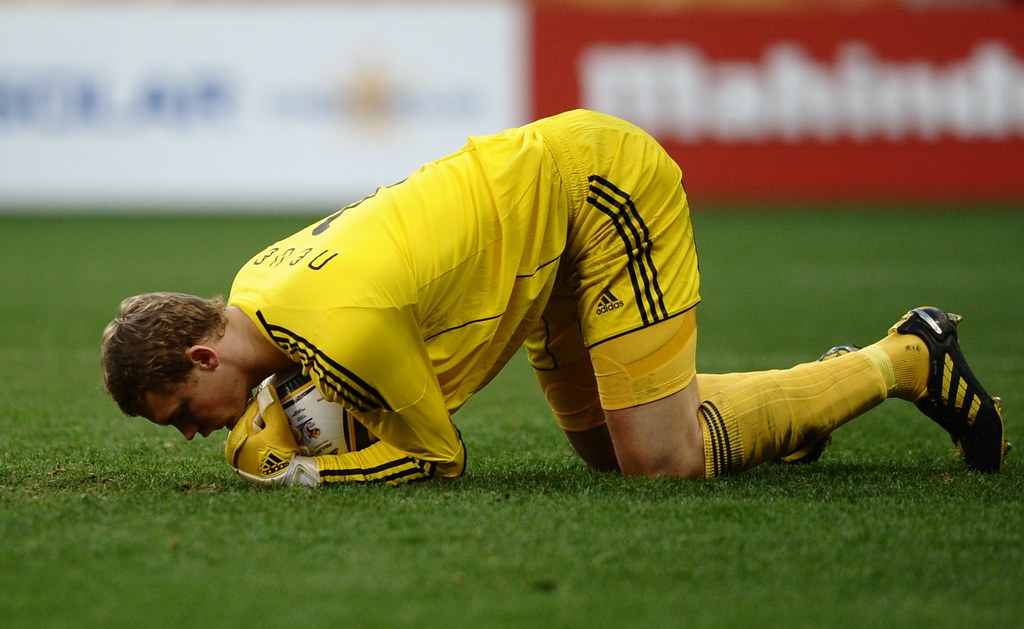
So yeah. Do your grip work.
2. Improve explosive power
By improving strength from the movements above, you’re doing your lower and upper body power a tremendous service.
In order to truly improve power output, you have to develop strength. I’ll leave the force velocity curve here:
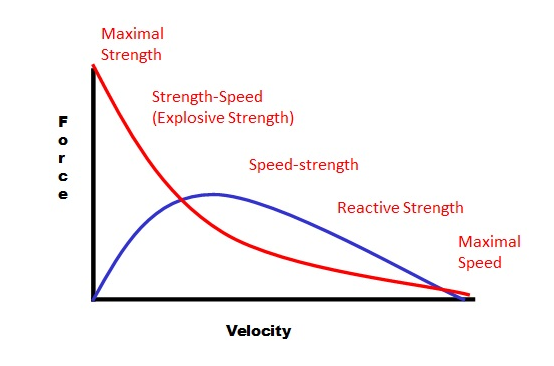 If you graduated high school, congrats. You understand basic physics, so no need for a scientific explanation here. All you need to know is: strength produces more power.
If you graduated high school, congrats. You understand basic physics, so no need for a scientific explanation here. All you need to know is: strength produces more power.
Here are some power drills for goalkeepers to do in conjunction with their strength movements:
Forward Skater Jumps
Lateral Skater Jumps
Weighted Vertical Jumps
Depth Transverse Jumps
Plyo Push-Ups
Medicine Ball Slams
3. Reinforce foot quickness.
If you’re a goalkeeper and your feet are asleep, then you’ll be slow to react.
And if you haven’t been taught athletic stance, yikes…
Anyway, let me help.
For one, athletic stance needs to be learned. It allows keepers to move and react quicker. For a detailed post on the topic go HERE. For a video tutorial, go HERE.
Of course we can bark at our keepers to “get low!” but the one thing that will improve their stance is getting in the gym. The hip hinge, especially, teaches athletes how to fire their hamstring and glute muscles so they can sink their hips down and stay low. Movements like deadlifts, single leg deadlifts and good mornings are the BEST teachers for this. Muscle recruitment is magical, no doubt.
Here is an article An Ode to the Hip Hinge for more information on the power of athletic stance and training it in the weight room.
Also, here are some quickness drills to try:
Step Box Lateral Shuffle
Lateral Hurdle Drill
Quick caveat: I won’t pretend to know a library of goalkeeper footwork drills, so that is where the technical training with a specialist needs to come into play.
Mind you, these drills are a nice start to reinforce coordination and excite the nervous system. And I’d argue they’re a great warm-up to a session.
4. Don’t forget short distance speed.
Just because you’re a keeper doesn’t mean you’re off-the-hook with running.
LOLOLOL. That’s adorable.
Trust me, you need to start training speed, namely, acceleration.
You know, just in case a striker on the other team has an explosive counterattack. With that said, you need to be fast enough to sacrifice yourself, sprint 10 yards into a tackle, and dive in front of them to block their shot.
Yes, this happens. And yes, these moments make or break a game. No pressure. ;-O
For a more in-depth article on the physiology of acceleration training, go HERE. And don’t you worry: I’ll spare my goalkeepers the 2-mile run test. No need for those.
In the mean time, here are some drills to get started to improve short distance speed:
Sled Sprints
10-yard Sprint
When it comes to speed work for goalkeepers, your best bet is doing resisted training with sleds or bands to hone in on acceleration. To complement this, unresisted, maximal short sprints with varied starts – split stance, feet chopping, lateral shuffle, roll-over, or chest-to-ground are all viable options. For more specific programming and progressions, go HERE.
4. Increase confidence
As a nice byproduct to strength training, goalkeepers will improve their confidence.
Too, strength training has its way of improving posture and the way keepers carry themselves. Full disclosure: as a striker, if a goalkeeper walks on the pitch with slouched shoulders, that oozes insecurity to me.
And at that moment, I’m saying to myself, “yep. I’m totally running over and scoring on this fool.”
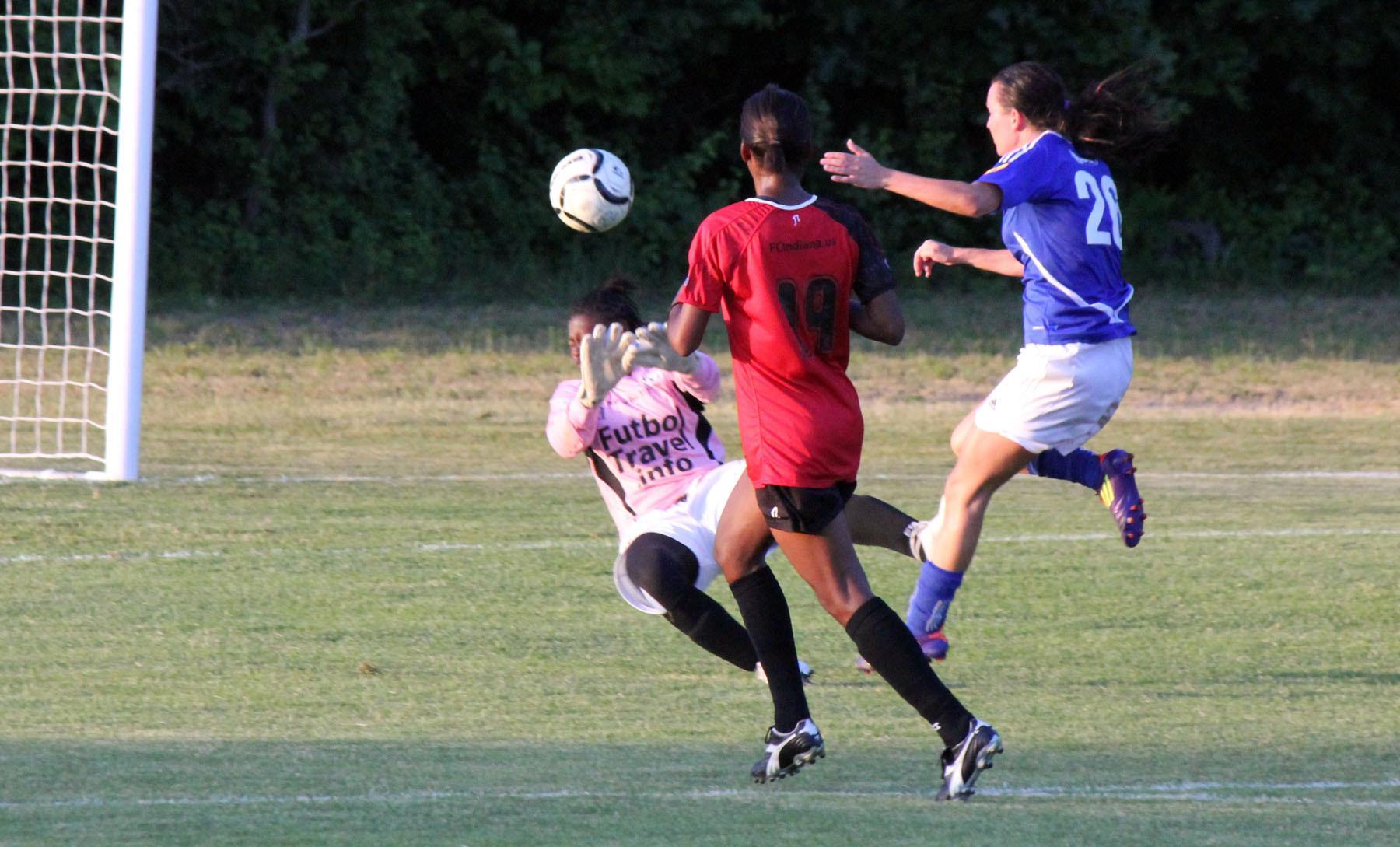
So goalkeepers: true confidence is having strength. Not only does lifting weights build your physical strength and power, it builds your mental toughness. Don’t argue with me: you need to hold down the fort in your box, and be the toughest cookie out there. This is true goalkeeper strength.
What also is true goalkeeper strength is stepping on the field with your chest beaming with confidence.
And being able to say,”I might die on this 50-50 ball, but I’m durable enough to handle it.”
And scoring a 100m goal. Like a boss. <—shout out to Tim Howard.
And staring down the opponent’s tallest strikers and flexing your muscles.
And diving into tackles with a “f*ck it, I got this” mindset.
And yelling at your defense to step it up because you know you can bench press them.

Even though I’m a striker, I know exactly what scared me about the best goalkeepers: muscles, power, and confidence.
Of course goalkeepers will need technical training as a complement to weight training. We’d be doing them a disservice if we ignored one over the other. And truthfully, I will be the first to send an athlete to a qualified skills coach who can teach diving, hand position, angles, punting, scanning, etc.
Certainly, technical training for a goalkeeper must be reinforced throughout their career, but if they want to reach next-level-Drogo-powerful-strong-scary level, do the work in the gym and all of the exercises I mentioned above.
Bonus points if you wear war paint.

If you enjoyed this article and found it valuable, you can start your power and strength journey with my year-round soccer program HERE


Benoit
Posted at 13:58h, 21 AprilSuper article .
A partir de quel âge un gardien peut
soulever des poids ?
Elias Vandeputte
Posted at 19:29h, 27 MayVery good article, thanks a lot!💪
erica
Posted at 13:42h, 02 JuneAww of course!!! 🙂
Peter Wiltmann
Posted at 13:14h, 02 JuneExcellent, I used to coach soccer, I had no idea. I coach xc skiing now and it is amazing how many exercises would directly benefit a skier.
The big one is the mental aspect of these exercises, war paint….yeah … thank you!
erica
Posted at 13:42h, 02 JuneThanks, Peter! Yes, so many movements apply to many sports and athletes! Gotta stay strong and powerful!
Chris
Posted at 00:28h, 22 JanuaryI’m a goalie, this was helpful… nuf’ said
erica
Posted at 12:00h, 22 January🙂